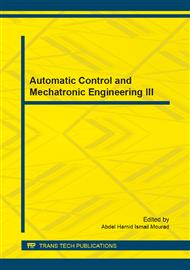p.3
p.7
p.11
p.18
p.22
p.27
p.31
p.36
Computer Aided Design of Auto-Location Head-Controlled Talking Machine for Visually Impaired People with Multiple Disabilities
Abstract:
In this paper, the auto-location head-controlled talking machine has been carried out using computer aided design to solve the problem of communication with the outside world for the visually impaired people with multiple disabilities. The talking machine makes use of the infrared ray sensors to receive the signals launched by shaking the infrared ray emitter on their heads. The communication functions of Pinyin, associating Chinese character, debugging error are processed based on the single chip processor 89C52. Then the signals are transmitted into a personal computer through the RS-232 or USB interface. The pronounced software of head-controlled talking machine is created using text-to-speech system to achieve the communication with other people. This study also develops auto-location function by the CCD tracing module to adjust the infrared ray sensor and increase the accuracy of the head-controlled talking machine. The results of this study can improve the ability of communication for visually impaired people with multiple disabilities.
Info:
Periodical:
Pages:
7-10
Citation:
Online since:
August 2014
Authors:
Price:
Сopyright:
© 2014 Trans Tech Publications Ltd. All Rights Reserved
Share:
Citation:


